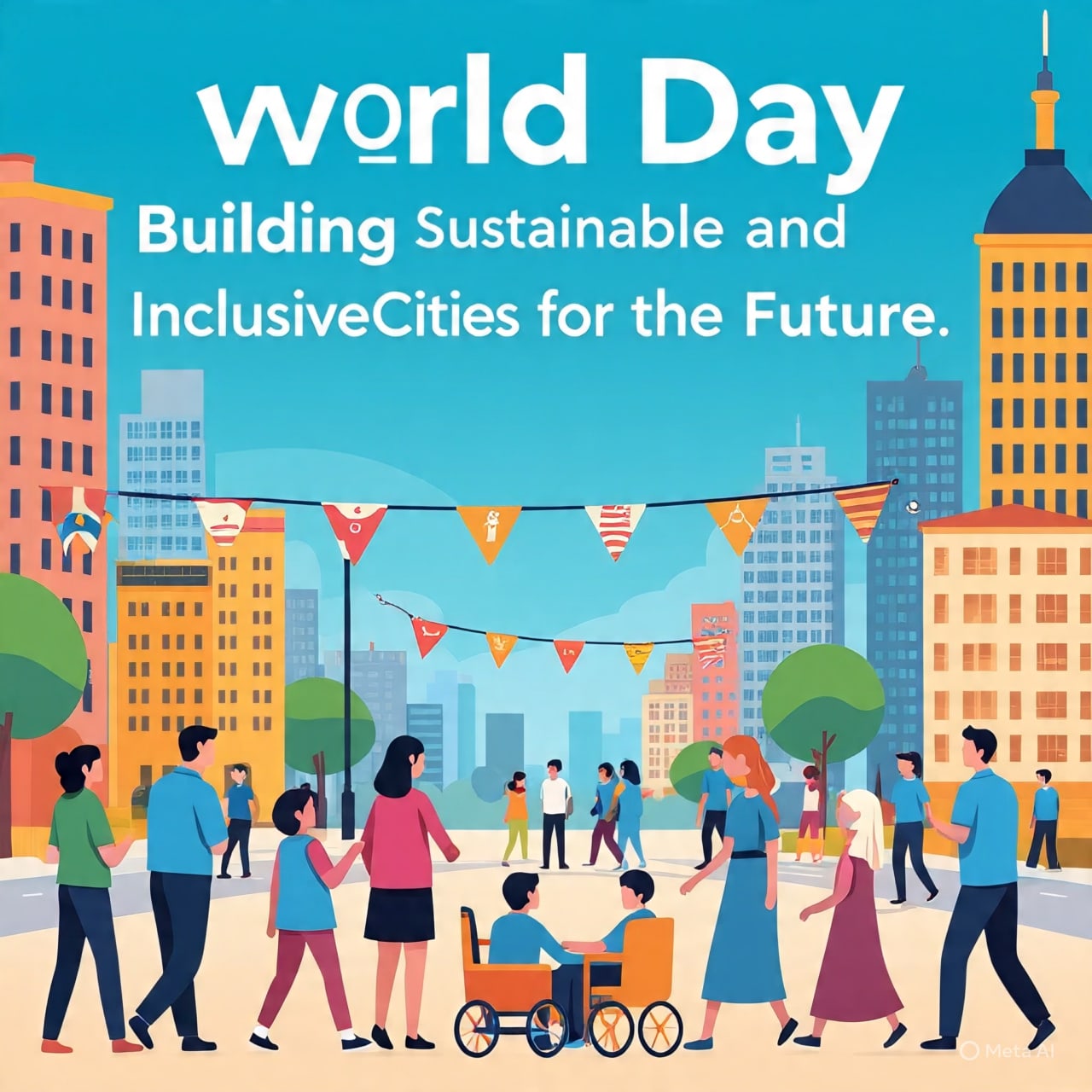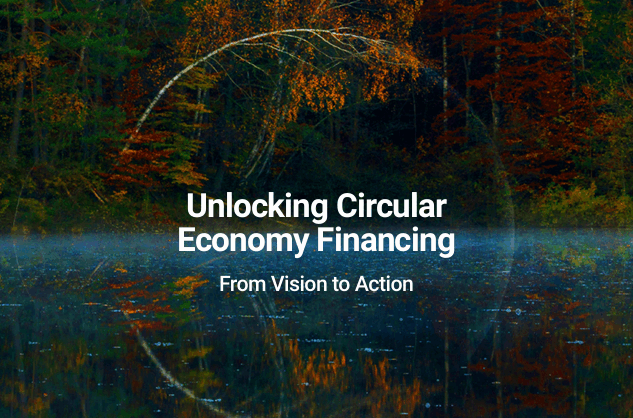World Cities Day: Building Sustainable and Inclusive Cities – vocal.media

Report on World Cities Day and Sustainable Urban Development
Introduction: Aligning Urbanization with Sustainable Development Goals
World Cities Day, observed annually on October 31st since its designation by the United Nations in 2014, serves as a global platform to promote sustainable urban development. With over half the global population residing in urban areas—a figure projected to reach two-thirds by 2050—the strategic development of cities is integral to achieving the Sustainable Development Goals (SDGs). This report examines the role of cities in advancing the 2030 Agenda, focusing on the challenges and opportunities inherent in rapid urbanization.
The Critical Role of Cities in the SDG Framework
Cities are central hubs for economic activity, innovation, and culture, making them critical arenas for SDG implementation. Well-managed urban development directly supports numerous global goals.
SDG 11: Sustainable Cities and Communities
The primary objective of World Cities Day is to advance SDG 11, which aims to make cities and human settlements inclusive, safe, resilient, and sustainable. This goal is foundational to addressing the multifaceted challenges of urban life.
Contributions to Broader SDGs
Effective urban planning also contributes significantly to other SDGs:
- SDG 3 (Good Health and Well-being): Access to healthcare facilities, green spaces, and reduced pollution levels improve public health.
- SDG 4 (Quality Education): Cities concentrate educational institutions, offering opportunities for lifelong learning.
- SDG 8 (Decent Work and Economic Growth): Urban centers are engines of economic growth, creating jobs and fostering innovation.
- SDG 10 (Reduced Inequalities): Inclusive urban policies can ensure equitable access to services and opportunities for all residents.
- SDG 13 (Climate Action): Sustainable urban infrastructure, transport, and energy systems are essential for mitigating climate change.
Challenges to Sustainable Urbanization
Unmanaged urban growth presents significant obstacles to achieving the SDGs. Key challenges include:
- Overcrowding and Slum Development: Strains public services and infrastructure, undermining progress on SDG 1 (No Poverty) and SDG 11.
- Pollution and Environmental Degradation: Air, water, and waste pollution negatively impact SDG 3 (Good Health and Well-being) and SDG 6 (Clean Water and Sanitation).
- Socio-Economic Inequality: Disparities in access to housing, employment, and essential services hinder the achievement of SDG 10 (Reduced Inequalities).
- Infrastructure Deficits: Inadequate transport, energy, and digital infrastructure limits economic potential, affecting SDG 9 (Industry, Innovation, and Infrastructure).
Strategies for Achieving Sustainable Urban Futures
Smart City Solutions for SDG Alignment
The integration of technology and data-driven solutions can accelerate progress towards the SDGs. Smart city initiatives contribute by:
- Improving transport efficiency to reduce emissions (SDG 11, SDG 13).
- Optimizing energy consumption through smart grids (SDG 7, SDG 11).
- Enhancing public service delivery through digital platforms (SDG 16).
- Utilizing data for disaster preparedness and resilience planning (SDG 11, SDG 13).
Community Participation and Inclusive Governance
Engaging citizens in urban planning is crucial for creating equitable cities that reflect community needs, directly supporting SDG 11 and SDG 16 (Peace, Justice, and Strong Institutions). Active participation ensures that development benefits all segments of the population.
Global Best Practices
Several cities provide models for sustainable urban development:
- Copenhagen, Denmark: Extensive cycling infrastructure promotes clean mobility, contributing to SDG 3 and SDG 13.
- Singapore: Integration of green buildings and urban parks enhances biodiversity and air quality, aligning with SDG 11 and SDG 15 (Life on Land).
- Curitiba, Brazil: An efficient and affordable bus rapid transit system ensures equitable access to transport, advancing SDG 10 and SDG 11.
- Seoul, South Korea: Advanced digital governance platforms improve transparency and public service access, supporting SDG 16.
A Call to Action for Sustainable Urban Development
World Cities Day is a call for concerted action from governments, the private sector, civil society, and citizens. Achieving sustainable urban development requires a multi-stakeholder approach focused on integrated solutions.
- Policy Integration: Governments must integrate SDG targets into national and local urban planning policies.
- Investment in Sustainable Infrastructure: Prioritize investments in renewable energy, public transport, and green public spaces to build resilient and low-carbon cities.
- Promotion of Inclusive Economies: Implement policies that support small businesses and create decent work opportunities for all residents, in line with SDG 8.
- Empowerment of Local Communities: Foster participatory governance mechanisms to ensure urban development is inclusive and equitable.
By working collaboratively, the global community can transform urban centers into resilient, vibrant, and sustainable hubs that advance the well-being of both people and the planet.
Analysis of Sustainable Development Goals in the Article
1. Which SDGs are addressed or connected to the issues highlighted in the article?
The article on World Cities Day addresses several Sustainable Development Goals (SDGs) by focusing on the challenges and opportunities of urbanization. The primary goal is SDG 11, but its interconnected nature brings other goals into focus.
- SDG 11: Sustainable Cities and Communities: This is the central theme of the article. It directly discusses the importance of making cities “inclusive, safe, resilient and sustainable” by addressing issues like planning, pollution, infrastructure, and public spaces.
- SDG 3: Good Health and Well-being: The article connects urban planning to health by mentioning access to “hospitals” and “healthcare.” It also highlights how reducing pollution and creating parks lead to “healthier and more livable” cities.
- SDG 4: Quality Education: The provision of and access to “schools” and “education and training” are mentioned as key components of well-planned cities and drivers of economic opportunity.
- SDG 7: Affordable and Clean Energy: The article points to this goal by advocating for the use of “renewable energy,” “smart energy systems for efficiency,” and “clean energy programs” as part of sustainable urban practices.
- SDG 8: Decent Work and Economic Growth: The role of cities as economic hubs is emphasized. The text discusses how well-planned cities “create jobs,” “support businesses,” “attract investment,” and “foster innovation,” contributing to economic growth.
- SDG 10: Reduced Inequalities: The article addresses inequality as a major urban challenge, noting that some communities “lack access to jobs, schools, and healthcare.” It calls for “inclusive cities” and “balanced growth” that provides “equal opportunities to all city residents.”
- SDG 13: Climate Action: While not named explicitly, this goal is addressed through the section on “Environmental Responsibility.” The article states that sustainable practices in cities, such as reducing car use, using renewable energy, and creating parks, “help fight climate change.”
- SDG 17: Partnerships for the Goals: The article concludes with a call to action that emphasizes collaboration. It explicitly mentions that “Partnerships between governments, private companies, NGOs, and universities can fund innovations” and encourages everyone to work together.
2. What specific targets under those SDGs can be identified based on the article’s content?
Several specific SDG targets are reflected in the solutions and challenges discussed in the article.
- Target 11.1: Ensure access for all to adequate, safe and affordable housing and basic services and upgrade slums. This is implied by the mention of “slums” resulting from poor planning and the call for inclusive cities that provide access to “housing.”
- Target 11.2: Provide access to safe, affordable, accessible and sustainable transport systems for all. This target is directly addressed through examples like “Copenhagen, Denmark: Biking infrastructure,” “Curitiba, Brazil: Affordable bus systems,” and the general call to “reduce car use with public transport and walking paths.”
- Target 11.3: Enhance inclusive and sustainable urbanization and capacity for participatory, integrated and sustainable human settlement planning and management. The article’s emphasis on “Community Participation is Key” and encouraging citizens to participate in governance by “Attending town halls” directly relates to this target.
- Target 11.6: Reduce the adverse per capita environmental impact of cities, including by paying special attention to air quality and municipal and other waste management. This is covered by the discussion on challenges like “Pollution: Air, water, and waste management issues” and solutions such as creating parks to “improve air quality” and managing “waste and water efficiently.”
- Target 11.7: Provide universal access to safe, inclusive and accessible, green and public spaces. The article supports this target by encouraging citizens to support “parks and public spaces” and highlighting Singapore’s use of “green buildings and gardens.”
- Target 8.3: Promote development-oriented policies that support productive activities, decent job creation, entrepreneurship, creativity and innovation. This is reflected in the section on “Economic Growth and Opportunities,” which advocates for policies “Supporting small businesses” and “Promoting technology and creative industries.”
- Target 17.17: Encourage and promote effective public, public-private and civil society partnerships. The article’s call for “Partnerships between governments, private companies, NGOs, and universities” to solve urban problems is a direct reference to this target.
3. Are there any indicators mentioned or implied in the article that can be used to measure progress towards the identified targets?
The article does not cite official UN indicators, but it implies several metrics that can be used to measure progress towards the identified targets.
- For Target 11.2 (Sustainable Transport): The article implies indicators such as the length and use of biking infrastructure (Copenhagen example), the proportion of the population with convenient access to public transport (Curitiba example), and overall reduction in traffic congestion and car use.
- For Target 11.3 (Participatory Planning): Progress could be measured by the level of citizen engagement in local governance, such as the number of people “Attending town halls” or participating in community-led initiatives like “clean-ups and planting trees.”
- For Target 11.6 (Environmental Impact): Implied indicators include measurements of air quality (related to reducing pollution), the efficiency of waste and water management systems, and the reduction in overall pollution levels in urban areas.
- For Target 11.7 (Green and Public Spaces): The amount and accessibility of green spaces per capita, such as parks and public gardens, is an implied indicator, as seen in the reference to Singapore’s “green buildings and gardens.”
- For Target 7.2 (Renewable Energy): An implied indicator is the percentage of a city’s energy consumption derived from renewable sources, as suggested by the call to “Use renewable energy” and adopt “clean energy programs.”
- For Target 17.17 (Partnerships): The number and effectiveness of established partnerships between governments, private companies, and civil society for urban development projects can serve as an indicator.
4. Table of SDGs, Targets, and Indicators
| SDGs | Targets | Indicators (Identified or Implied in the Article) |
|---|---|---|
| SDG 11: Sustainable Cities and Communities | Target 11.1: Ensure access to adequate, safe and affordable housing and upgrade slums. | Proportion of urban population living in slums. |
| SDG 11: Sustainable Cities and Communities | Target 11.2: Provide access to safe, affordable, and sustainable transport systems. | Extent of biking infrastructure; accessibility of affordable bus systems; reduction in car use. |
| SDG 11: Sustainable Cities and Communities | Target 11.3: Enhance inclusive and sustainable urbanization and participatory planning. | Level of citizen participation in local governance (e.g., town hall attendance). |
| SDG 11: Sustainable Cities and Communities | Target 11.6: Reduce the adverse per capita environmental impact of cities. | Measurements of air quality; efficiency of waste and water management. |
| SDG 11: Sustainable Cities and Communities | Target 11.7: Provide universal access to safe, inclusive, and accessible green and public spaces. | Availability and accessibility of parks, gardens, and public spaces. |
| SDG 7: Affordable and Clean Energy | Target 7.2: Increase the share of renewable energy. | Percentage of city energy consumption from renewable sources. |
| SDG 8: Decent Work and Economic Growth | Target 8.3: Promote policies that support job creation and entrepreneurship. | Number of jobs created; number of small businesses supported. |
| SDG 17: Partnerships for the Goals | Target 17.17: Encourage effective public, public-private and civil society partnerships. | Number of multi-stakeholder partnerships for urban development. |
Source: vocal.media
What is Your Reaction?
 Like
0
Like
0
 Dislike
0
Dislike
0
 Love
0
Love
0
 Funny
0
Funny
0
 Angry
0
Angry
0
 Sad
0
Sad
0
 Wow
0
Wow
0














































/environment-climate-change-and-health-(ech)/water-sanitation-hygiene-and-health-(wsh)/landfill-tuvalu-36092.tmb-1200v.jpg?sfvrsn=5c21fe40_1#)



.jpg.webp?itok=0ZsAnae9#)
























